Hair Transplant in Brazil
Search and Compare the Best Clinics and Doctors at the Lowest Prices for Hair Transplant in Brazil
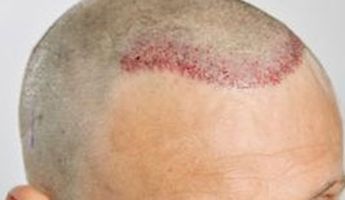
Find the best clinics for Hair Transplant in Brazil
With Medijump you can browse 9 facilities offering Hair Transplant procedures in Brazil. The cheapest price available is $3,529 in Araraquara. And for the cheapest price globally, prices start from $126 in Egypt.
Hair Transplant in Araraquara
Price: $ 3,529
Hair Transplant in Curitiba
Price: $ 8,309
Egypt offers the best prices Worldwide
Price: $ 126
From 7 verified reviews
Regiane Mendes, 16 December 2018
Great Professionals!
From 17 verified reviews
Marcia Megumi, 06 July 2020
Excellent service, great results. I highly recommend it.
From 5 verified reviews
Domingos Antonio Fortunato Netto, 09 November 2019
The staff are super attentive and Dr. Arthur is an artist! 🙌🏼
From 1 verified reviews
Simone Bocater, 19 July 2019
Terrible service! I called to inquire and as the person responsible for the procedure was not, the clerk was unable to ask for my phone, try to help.In short, they must be rich!
Dr. Sylverson Porto Rassi, located in Av Pedro Galeazi, Araraquara, Brazil offers patients Hair Transplant procedures among its total of 11 available procedures, across 4 different specialties. Currently, there's no pricing information for Hair Transplant procedures at Dr. Sylverson Porto Rassi, as all prices are available on request only, whilst the national average price is approximately $5,919. All procedures and treatments are undertaken by the lead specialist at the Hospital, and they are accredited by SBCP - Sociedade Brasileira de Cirurgia Plástica
Clínica Tournieux Cirurgia Plástica - São Paulo, located in R Para, Sao Paulo, Brazil offers patients Hair Transplant procedures among its total of 15 available procedures, across 2 different specialties. Currently, there's no pricing information for Hair Transplant procedures at Clínica Tournieux Cirurgia Plástica - São Paulo, as all prices are available on request only, whilst the national average price is approximately $5,919. All procedures and treatments are undertaken by just a small team of specialists, with 2 in total at the Hospital, and they have multiple recognized accreditations, including: SBCP - Sociedade Brasileira de Cirurgia PlásticaAEXPI - Associação dos Ex-alunos do Professor Ivo Pitanguy
Clínica Tournieux Cirurgia Plástica - Clínica Manaus, located in Av Pedro Galeazi, Araraquara, Brazil offers patients Hair Transplant procedures among its total of 12 available procedures, across 2 different specialties. Currently, there's no pricing information for Hair Transplant procedures at Clínica Tournieux Cirurgia Plástica - Clínica Manaus, as all prices are available on request only, whilst the national average price is approximately $5,919. All procedures and treatments are undertaken by just a small team of specialists, with 2 in total at the Hospital, and they have multiple recognized accreditations, including: SBCP - Sociedade Brasileira de Cirurgia PlásticaAEXPI - Associação dos Ex-alunos do Professor Ivo Pitanguy
Clínica Tournieux Cirurgia Plástica - Clínica Campinas, located in Av Pedro Galeazi, Araraquara, Brazil offers patients Hair Transplant procedures among its total of 12 available procedures, across 2 different specialties. Currently, there's no pricing information for Hair Transplant procedures at Clínica Tournieux Cirurgia Plástica - Clínica Campinas, as all prices are available on request only, whilst the national average price is approximately $5,919. All procedures and treatments are undertaken by just a small team of specialists, with 2 in total at the Hospital, and they have multiple recognized accreditations, including: SBCP - Sociedade Brasileira de Cirurgia PlásticaAEXPI - Associação dos Ex-alunos do Professor Ivo Pitanguy
CosmeticVacations, located in R Real Grandeza, Rio de Janeiro, Brazil offers patients Hair Transplant procedures among its total of 64 available procedures, across 7 different specialties. Currently, there's no pricing information for Hair Transplant procedures at CosmeticVacations, as all prices are available on request only, whilst the national average price is approximately $5,919. All procedures and treatments are undertaken by the lead specialist at the Hospital, and they have multiple recognized accreditations, including: ASPS - American Society of Plastic SurgeonsSBCP - Sociedade Brasileira de Cirurgia PlásticaSBD - Sociedade Brasileira de DermatologiaSBCD - Sociedade Brasileira de Cirurgia DermatológicaAEXPI - Associação dos Ex-alunos do Professor Ivo PitanguyCBA - Consórcio Brasileiro de AcreditaçãoSBA - Sociedade Brasileira de AnestesiologiaSBCM - Sociedade Brasileira de Cirurgia da MãoSBU - Sociedade Brasileira de Urologia
- Home
- Brazil
Compare Before & After Photos of _procedure_photos.phpHair Transplant
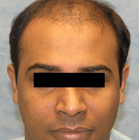
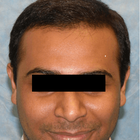
Front view
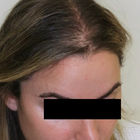
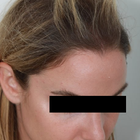
Half-side view
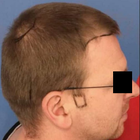
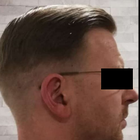
Full-side view
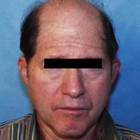

Front view
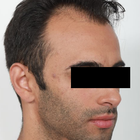
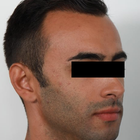
Half-side view
WHY US?
At Medijump, we're making medical easy. You can search, compare, discuss, and book your medical all in one place. We open the door to the best medical providers worldwide, saving you time and energy along the way, and it's all for FREE, no hidden fees, and no price markups guaranteed. So what are you waiting for?

Free

Best Price

Widest Selection

Risk-Free
What you need to know about Hair Transplant in Brazil

Hair Transplantation, also known as hair restoration surgery, is the surgical process of moving hair follicles from one part of the body that is rich in hair (known as a donor site) and embedding them at the the bald area of the head (recipient site). The medical course of action that aims at addressing hair loss issues and improving aesthetics. While there are many causes of hair loss, the most common reason, especially for men, is genetics. Hereditary hair loss as men age is the number one leading factor of baldness.
It is a minimally invasive procedure, performed under local anesthetic and is most commonly used to treat male baldness, but the technique can also be used to restore eyelashes, eyebrows, beard hair and to fill in scars. The procedure usually lasts between 4 to 8 hours, depending on the number of grafts needed. This procedure is a long-term solution to hair loss, with most patients experiencing significant improvement in hair growth after six months to a year.
Why do people experience hair loss?
We lose an average of 100 hairs a day, however, these hairs are immediately replaced by new hairs growing at the same time. Hair loss can occur suddenly or gradually and it may affect your scalp or your entire body, depending on what’s causing it. Other causes of hair loss may include:
- Stress - a lot of people may experience hair thinning for several months due to a physical or emotional shock. However, this type of hair loss is only temporary.
- Certain Hairstyles and treatments - hairstyles that pull your hair like tight pigtails, ponytails or braids can actually cause traction alopecia. Permanent hair treatments and hot oil treatment may also lead to hair loss; these hair treatments cause inflammation to the hair follicles. If there is scarring, hair loss may be permanent.
- Radiation Therapy - for example, during cancer treatment.
- Certain medical conditions and hormonal changes - in women, hormonal changes due to pregnancy, childbirth menopause or thyroid problems may cause temporary or permanent hair loss. As for medical conditions, hair loss may be due to alopecia, scalp infections like ringworm or a hair-pulling disorder known as trichotillomania.
Sudden hair loss may also be a sign of a specific medical condition that will require treatment. You will need to consult your doctor if you experience more than your usual hair loss whenever you are combing or washing your hair and also if you encounter a sudden patchy loss of hair.
A hair transplant is a common treatment performed on people who are experiencing baldness due to aging and heredity factors. However, if you are completely bald with absolutely no hair left, then this type of treatment may not be applicable for you, as you won't have sufficient donor hair to supply.
What is the cost of Hair Transplant in Brazil?
The cost of Hair Transplant in Brazil is typically influenced by various factors. These may include the experience and reputation of the surgeon, the complexity of your case, and the total number of grafts needed. Moreover, the pricing strategy followed by the medical establishment also plays a significant role. Some clinics charge based on the number of grafts transplanted, while others might price the procedure as a package. The exact price can therefore only be determined in consultation with a trusted clinic. While it can appear costly to some, the Hair Transplant is an investment in one's appearance and self-confidence.
What Does The Procedure Involve?
The hair transplant procedure involves taking hair from your Donor Site and transferring it to the area(s) lacking in hair, the Recipient Site, and a local anesthetic will be applied before the procedure begins to limit any discomfort.
There are two main methods used in a hair transplant procedure:
- Follicular Unit Transplantation (FUT) - strips of tissue will be removed from your donor area, these strips will be cut into individual follicular units. Small cuts will be made on your scalp where the follicular unit grafts will be placed. This method is becoming less popular.
- Follicular Unit Extraction (FUE) - individual hair follicles will be directly extracted from your donor area and moved to your recipient site using a specialist microsurgical needle. FUE is now the preferred technique for hair transplants as it will not leave a linear scar at the back of the head.
Procedures are undertaken by a fully qualified technician and usually involve the extraction of around 3,000 grafts, going up to 4,000. Any more, and it will likely require two separate sittings to complete.
How Long Should I Stay in Brazil for a Hair Transplant Procedure?
Hair transplants are usually performed as an outpatient procedure. Thus, you will be able to go back to your hotel immediately after. Both methods used for Hair Transplant treatments usually take 4-8 hours to complete. With FUE technique, there are no stitches or staples to be removed, so you won't need to stay in Brazil for long after the procedure, just allow a day or two to be sure before traveling home.
You should expect to pay the clinic another visit the day after the treatment so the doctor can remove the bandage, examine the areas of intake and transplantation of follicles, before washing your hair using a special technique that you will learn to perform by yourself. Finally, the doctor will provide you with a special shampoo that will help to restore the skin.
What's the Recovery Time for Hair Transplant Procedures in Brazil?
Your scalp will continue to be sensitive to pain for a few days, during which time you should continue to take the medications provided by the doctor. On top of the pain killers and anti-inflammatory meds, you may also be given antibiotics to lessen the risk of infection, as uncommon as this may be.
You should expect to return to work and your daily routine, including exercise, after 5 days. However, the signs of a hair transplant will remain for at least another 2-3 weeks, at which point the newly transplanted hairs will start to fall out - but don't be alarmed! This is to be expected as you've just had a follicle extraction, so dead hair will simply make way for new hair over the coming weeks and months.
If the average person's hair only grows at a centimeter per month, then it will take some time before you can wear your hair long again. You could expect to display short and consistent hair just 4-6 weeks after the treatment.
What sort of Aftercare is Required for Hair Transplant Procedures in Brazil?
After the procedure is complete, anti-swelling medication and painkillers will be available and you'll be provided with various essentials to see you through the days immediately following. Post-op items may include; specialist shampoo, lotion, multivitamins, a special hat, a headband, neck pillow, and wound dressing.
Having already been provided with your post-op aftercare products, you may also be offered Platelet Rich Plasma (PRP) Therapy to help stimulate the hair follicles and encourage hair growth. This is where a small amount of blood is taken, rich in plasma, which is then injected into the Recipient Site.
What's the Success Rate of Hair Transplant Procedures in Brazil?
The success rate for hair transplants is one of the highest, at 98% and is considered the only truly effective remedy for hair loss.
The effectiveness of Hair Transplant treatments is significantly shaped by the surgeon's expertise who executes the process. A seasoned and competent surgeon employs sophisticated methods to prevent harm to the transplanted hair follicles during the process, which leads to a higher likelihood of success. Additionally, the ability of the surgeon to place the grafts in an attractive manner that resembles natural hair growth further enhances the perceived successfulness of the result.
Beyond the competency of the surgeon, the overall health status and lifestyle choices of the patient greatly impact the treatment's effectiveness. Subpar habits such as excessive smoking and alcohol intake can obstruct the recovery process and influence the result adversely. Illnesses like diabetes can also interfere with the likelihood of success.
Consideration of the donor hair's quality is another aspect that may affect the success of the procedure. Generally, those with robust, plentiful hair in the donor region have a higher success rate as compared to individuals with sparse or poor-quality hair. The availability of more follicles for transplantation yields better results. A detailed examination is carried out before the Hair Transplant to verify the quantity and quality of the donor's hair.
Are there Alternatives to a Hair Transplant?
Laser therapy is one alternative to a hair transplant. During this procedure, a low-level laser device will be used as a treatment for a hair loss specifically caused by genetics. This low-level laser with a wavelength of 650 nanometres can actually stimulate your hair growth. However, long term effects for this type of alternative still remains uncertain.
PRP Therapy is another alternative you can consider. This type of treatment will make use of your own blood to promote hair growth. Your blood will be spun in a centrifuge to separate your blood’s plasma component from your red and white blood cells. Plasma contains many growth factors that promote hair growth when injected into the scalp.
Other non-surgical alternatives could include simply shaving all your hair off, trying other hairstyles or using a wig or hairpiece.
How do FUT and FUE Compare?
The two most common techniques used are the Follicular Unit Transplant (FUT) and the Follicular Unit Extraction (FUE). How do they compare?
1. FUT, also referred to as FUSS (Follicular Unit Strip Surgery), involves the removal of a strip of skin from the back of the head containing lots of hair follicles, which is stitched up and hidden by the surrounding hair. Then the strip of follicles is divided into 500-2,000 tiny grafts containing just a few hairs. These are then embedded across the bald area of the head.
2. FUE does not require a strip of skin to be removed, instead, the hair follicles are individually removed from the donor site and positioned across the bald area in tiny slits created by a scalpel or needle.
What are the Risks Associated with Hair Transplant?
Like any surgical procedure, Hair Transplant carries certain risks, although they are relatively rare and usually minor if performed by a skilled and experienced surgeon.
Some potential risks and side effects could include:
- Scarring is the most common side effect (only applicable to FUT)
- Infections
- Temporary loss of sensation around the surgical sites
- Inflammation of hair follicles (folliculitis)
- Temporary scalp pain, itching, and swelling.
- Unnatural-looking hair growth
Whilst the information presented here has been accurately sourced and verified by a medical professional for its accuracy, it is still advised to consult with your doctor before pursuing a medical treatment at one of the listed medical providers
No Time?
Tell us what you're looking for and we'll reachout to the top clinics all at once
Enquire Now

Popular Procedures in Brazil
Prices Start From $153

Prices Start From $500

Prices Start From $4

Prices Start From $500

Recommended Medical Centers in Brazil for Hair Transplant

- Interpreter services
- Translation service
- Religious facilities
- Medical records transfer
- Medical travel insurance
- Health insurance coordination
- TV in the room
- Safe in the room
- Phone in the room
- Private rooms for patients available

- Interpreter services
- Translation service
- Religious facilities
- Medical records transfer
- Medical travel insurance
- Health insurance coordination
- TV in the room
- Safe in the room
- Phone in the room
- Private rooms for patients available

- Interpreter services
- Translation service
- Religious facilities
- Medical records transfer
- Medical travel insurance
- Health insurance coordination
- TV in the room
- Safe in the room
- Phone in the room
- Private rooms for patients available

- Interpreter services
- Translation service
- Religious facilities
- Medical records transfer
- Medical travel insurance
- Health insurance coordination
- TV in the room
- Safe in the room
- Phone in the room
- Private rooms for patients available

- Interpreter services
- Translation service
- Religious facilities
- Medical records transfer
- Medical travel insurance
- Health insurance coordination
- TV in the room
- Safe in the room
- Phone in the room
- Private rooms for patients available

- Interpreter services
- Translation service
- Religious facilities
- Medical records transfer
- Medical travel insurance
- Health insurance coordination
- TV in the room
- Safe in the room
- Phone in the room
- Private rooms for patients available

- Interpreter services
- Translation service
- Religious facilities
- Medical records transfer
- Medical travel insurance
- Health insurance coordination
- TV in the room
- Safe in the room
- Phone in the room
- Private rooms for patients available

- Interpreter services
- Translation service
- Religious facilities
- Medical records transfer
- Medical travel insurance
- Health insurance coordination
- TV in the room
- Safe in the room
- Phone in the room
- Private rooms for patients available

- Interpreter services
- Translation service
- Religious facilities
- Medical records transfer
- Medical travel insurance
- Health insurance coordination
- TV in the room
- Safe in the room
- Phone in the room
- Private rooms for patients available

- Interpreter services
- Translation service
- Religious facilities
- Medical records transfer
- Medical travel insurance
- Health insurance coordination
- TV in the room
- Safe in the room
- Phone in the room
- Private rooms for patients available
Hair Transplant in and around Brazil
About Brazil
Occupying the title of the largest country in South America, Brazil embraces a diverse population of over 209 million people. The nation is globally renowned for its passion for football (also referred to as soccer in some parts of the world) and their dynamic, flamboyant carnival traditions, boasting a vibrant mix of music, dance, and colorful attire.
In addition to its vivacious culture, Brazil is a sanctuary of spectacular natural beauty. The country nurtures some of the world's most stunning natural wonders, including the dramatic Iguacu Falls and the world's largest tropical rainforest, the Amazon Rainforest, teeming with diverse plant and animal species. One can't miss the landmark figurine of Christ the Redeemer in Rio de Janeiro that towers 98-feet high, becoming a symbol of Brazil's deep-rooted religious faith and an iconic sight that captures hearts worldwide.
Brazil offers more than 60 JCI-accredited facilities and is one of the leading destinations in the world for cosmetic surgery, with Hair Transplant procedures being especially popular. Doctors are often Western-trained and speak English on top of Portuguese and Spanish. Local accreditations include the Consortium of Brazilian Accreditation and the Brazilian Hospital Medical Quality Organization (ONA). Popular locations within Brazil include the capital Brasilia, Rio de Janeiro, Sao Paulo, and Curitiba.
Popular Parts of Brazil
- Rio de Janeiro is a combination of natural attractions and metropolis. It is known to be a party city that offers good times and an unforgettable experience. Lounge around in the world-famous beaches of Ipanema and Copacabana, sample Brazilian cuisine, hike the summit of Corcovado and see the high statue of Christ the Redeemer, dance in Rio Carnival, and see the spectacular views of Ipanema and Guanabara Bay from the Sugarloaf Mountain.
- São Paulo is the largest city in Brazil. It is a huge city that at first glance seems intimidating. It offers hundreds of museums, quirky urban art, delicious cuisine, lively nightlife, and intense cultural experience. Visit Avenida Paulista (Paulista Avenue), a street filled with shopping centers, parks, bars, restaurants, museums, theatres, and cultural spaces.
- Salvador is full of vibrant cultures. It is the heart of Brazil’s Afro-Brazilian community. The city’s charm lies in its pastel-colored neighborhood, centuries-old architecture, and freshly-cooked acarajé and completed with wild festivals and capoeira circles every night.
- Brasília is Brazil’s capital. It’s very modern with futuristic architecture that looks more like artworks than ordinary buildings. It’s a paradise for architecture buffs. Besides the architecture, the food and nightlife in this city is something that should not be missed.
- Manaus might be isolated in terms of location, but it’s actually a large city with a prospering industry and a rich culture. The city is also filled with natural beauty; green spaces, waterfalls, and ecological parks surround its colonial buildings. It is the gateway to the Amazon Rainforest.
Weather and Climate in Brazil
As a large country, the weather in Brazil varies from tropical in the north to temperate in the south. A large part of the country lies in the topics. Brazil is a year-round destination because it has a steady average annual temperature. The temperature rarely drops below 20 °C.
Winter in Brazil starts in May and ends in September. The weather remains tropical in the north with an average temperature ranging between 20 °C to 30 °C. In Rio de Janeiro, the temperature varies between 14 °C to 25 °C. However, the evenings usually feel a lot colder.
During this particular season, one can expect a fair amount of rainfall in Rio, leading to many wet and rain-soaked days. If you plan a visit at this time, it's wise to keep that in mind and prepare accordingly. In contrast, further inland, São Paulo experiences significantly cooler temperatures compared to Rio, reflecting the country's vast geographical expanse and diverse microclimates spread across its regions.
This temperature drop might require some warm clothing, especially during late evenings and nights. So, whether you wish to enjoy the rainy murmur in Rio or seek the cool retreat of São Paulo, there's something unique for every traveler in Brazil during this season.
The temperature in Rio rise between November and March, with the highest temperature of around 40 °C but with a thermal sensation of around 50 °C. The Rain rarely lasts long during these months. In the north of Brazil, the rainy season starts in December. March and May see the heaviest rainfall. It’s hot and humid with frequent rain throughout the year in the Amazon.
Getting Around in Brazil
The most popular international airports are Rio de Janeiro–Antonio Carlos Jobim International Airport (popularly known as Galeão International Airport) and São Paulo/Guarulhos–Governador André Franco Montoro International Airport. Both airports serve domestic and international flights to many cities around the globe. The airports mainly serve major airlines but there are budget airlines such as Norwegian Air UK. Tourists can take taxis, bus, train, or car rental from both airports to the city centers.
Brazil is really big, so there will be a lot of long-distance travel to get around the country. The easiest and fastest way to get from one city to another is by domestic flights. The only downside is that the tickets are very expensive. LATAM and GOL Airlines offer multi-trip tickets or air pass. The most economical option is to buy an air pass if you plan to visit a number of different cities.
Buses are popular in Brazil, servicing most areas of the country. The bus system is excellent and provides a comfortable and economical way of travel. Be aware that the distance can be really tiring and overwhelming; some trips can take over 40 hours. The buses are operated by hundreds of different private companies, but the price is standardized. The fare varies from 75 BRL to 240 BRL. There are luxurious buses too.
A good way to get around major cities like São Paulo and Rio is to use Brazil Metro (subway). The fares are around 3.50 BRL to 3.80 BRL. You can purchase rechargeable travel cards. The metro does not operate at night. Be sure to watch your belongings at all times when traveling on the metro.
Taxis run on a metered system, but if you travel a bit further out of town, you need to negotiate the price with the driver. It is best to phone for a taxi or pick one up at a taxi station and make sure to get into a licensed taxi. Ferries and other water travel are important in many parts of Brazil.
Tourist Visas in Brazil
Nationals of 72 countries and territories can enter and stay in Brazil for up to 90 days without a visa. In some cases, an identity document may be accepted instead of a passport. Citizens of other countries, including China and India, must apply for and obtain a visa before entering Brazil. It is recommended to contact the nearest Brazilian embassy or consulate for the most up-to-date visa information.
Brazil offers an electronic visa (e-Visa) for citizens of eligible countries. The e-Visa is valid for two years and allows multiple entries for stays of up to 90 days per year. Applicants can apply for the e-Visa online through the Brazilian government's website.
Additional Information
- Local Currency: The official currency is the Brazilian Real (BRL). 1 USD will get you approximately 5.04 BRL.
- Money & Payments: ATMs are widely available in Brazil and it is the easiest way of getting cash in big cities. ATMs in smaller towns usually don’t work for non-Brazilian cards. Credit cards (Visa and MasterCard) are accepted in numerous shops, restaurants, and hotels. It might be handy to always have cash with you, but always be extremely cautious. Tipping is optional for housekeepers, tip parking assistants 2 BRL, or more since they do not receive wages and depend on tips. Taxis do not expect tips. Restaurants usually include a 10% service charge in the bill.
- Local Language: The official language is Portuguese. English is not widely spoken, especially outside Rio and São Paulo.
- Local Culture and Religion: The largest religion in Brazil is Christianity with more than 60% of the population follows Roman Catholicism.
- Public Holidays: Brazil celebrates major Christian religious holidays as well as Independence Day and Civil Servants Day. Festa Junina, Parintins Folklore Festival, and Oktoberfest are three of the biggest annual festival in the country.
Popular Searches
- Plastic Surgery in Thailand
- Dental Implants in Thailand
- Hair Transplant in Thailand
- Breast Augmentation Thailand
- Gastric Sleeve in Thailand
- Gender Reassignment Surgery in Thailand
- Laser Hair Removal in Bangkok
- Botox in Bangkok
- Dermatology in Bangkok
- Breast Augmentation in Bangkok
- Coolsculpting in Bangkok
- Veneers in Turkey
- Hair Transplant in Turkey
- Rhinoplasty in Turkey
- Stem Cell Therapy in Mexico
- Rhinoplasty in Mexico
- Liposuction in Mexico
- Coolsculpting in Tijuana
- Rhinoplasty in Korea
- Scar Removal in Korea
- Gastric Sleeve in Turkey
- Bone Marrow Transplant in India
- Invisalign in Malaysia
- Plastic Surgery in the Dominican Republic
- Tummy Tuck in the Dominican Republic
- Plastic and Cosmetic Surgery in Poland
- Rhinoplasty in Poland
- Hair Implant in Poland
- Dental Implants in Poland
- IVF in Turkey








